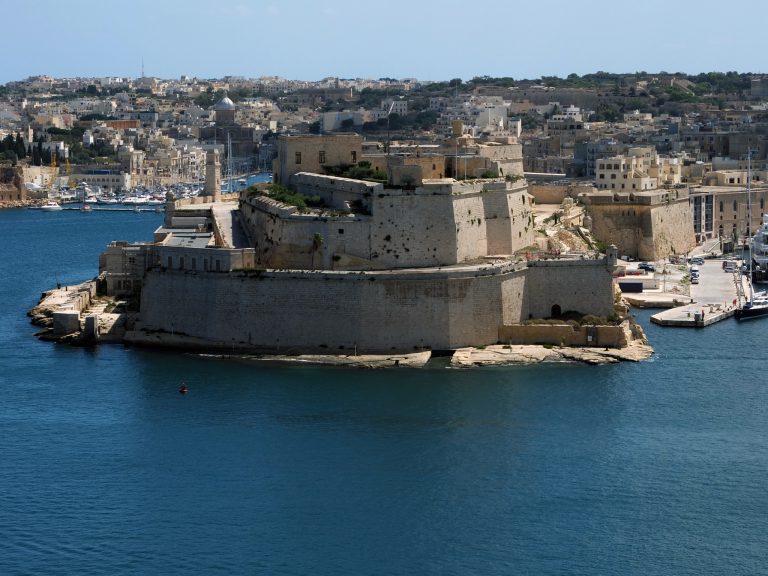 The Knights of St John (Knights Hospitaller) arrived in Malta in 1530. They were tired, worn out and down to around 180 of the once mighty Order of Knights. They’d wandered around Europe for 8 years before finally offered a home on this rocky, desolate, limestone island separating Christian Sicily and Muslim North Africa. Malta had no rivers, little agriculture and a very poor population. Let’s just say the Knights weren’t too thrilled with the gift of the three islands of Malta, Gozo and Comino. There were also strings attached. In return for the land, they had to protect the port of Tripoli from the Muslim invaders.
The Knights of St John (Knights Hospitaller) arrived in Malta in 1530. They were tired, worn out and down to around 180 of the once mighty Order of Knights. They’d wandered around Europe for 8 years before finally offered a home on this rocky, desolate, limestone island separating Christian Sicily and Muslim North Africa. Malta had no rivers, little agriculture and a very poor population. Let’s just say the Knights weren’t too thrilled with the gift of the three islands of Malta, Gozo and Comino. There were also strings attached. In return for the land, they had to protect the port of Tripoli from the Muslim invaders.
Not a big deal. The Knights were well trained in the fighting Muslims. It was their livelihood since 1099.
They started out in the 11th century as a group of merchants from Amalfi, Italy, caring for infirmed Pilgrims visiting the Holy Land. They called themselves the Order of St John. When the 1st Crusade arrived in 1099, they took on new responsibilities, which basically got sorted out as saving Christians and killing Muslims. Along with the Knights Templar, the Order of St John were the most feared fighting forces in the Holy land, brave Knights were generously rewarded.
The 8 pointed Amalfi Cross that came with them from Italy was transformed into the feared tunic worn over their armor, the white cross of peace and purity over a field of bloody red.
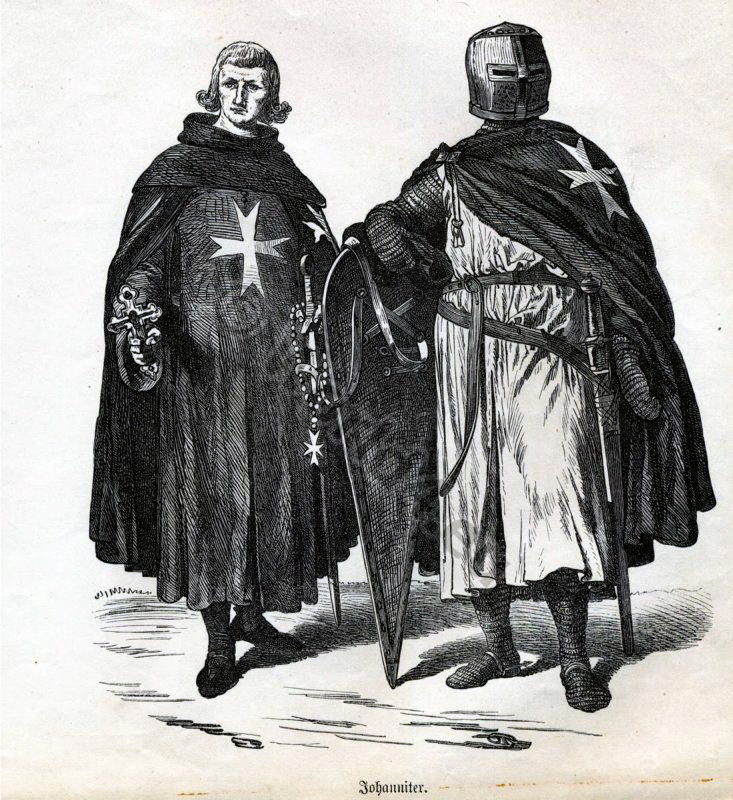 In 1291, the Crusaders were forced out of the Holy Land, defeated by the Mamluks. After a brief layover in Cypress, they arrived on Rhodes in 1309. Their fortresses on both Rhodes and Bodrum, Turkey protected the west from the onslaught of Muslim forces for over 200 years until 1522, when the Ottoman Turks under the leadership of the 26 year old Sultan Suleiman the Magnificent attacked the fortress of Rhodes.
In 1291, the Crusaders were forced out of the Holy Land, defeated by the Mamluks. After a brief layover in Cypress, they arrived on Rhodes in 1309. Their fortresses on both Rhodes and Bodrum, Turkey protected the west from the onslaught of Muslim forces for over 200 years until 1522, when the Ottoman Turks under the leadership of the 26 year old Sultan Suleiman the Magnificent attacked the fortress of Rhodes.
The Turks came with 400 ships and over 100,000 soldiers. The Knights defended the Rhodes fortress with around 500 Knights and 1,500 soldiers. The battle lasted 6 months. The Knights were exhausted and the weather was turning bad for everyone. In a brokered surrender, the Grand Master Philippe Villiers de L’isle-Adam and the remaining 180 Knights were granted free and safe passage off the island.
One of these Knights, Jean Parisot de la Valette was 26 years old, the same age as Suleiman. He would live to fight Suleiman again 43 years later in the Great Siege of Malta.
In 1551, the Knights lost Tripoli to the Turkish Corsair, Turgut Rais, the “Drawn sword of Islam” (Dragut Rais in English), who would become the Admiral supreme of Suleiman’s Ocean fleet. The Ottoman Turks were on the move to take control of Europe by land and sea and Malta became the strategic dot on the map that needed to fall into their hands.
 On May 18, 1565, Suleiman attacked Malta. He arrived with 181 war ships and more than 30,000 soldiers. Jean Parisot de la Valette, now the Grand Master of the Order of Knights was 70 yrs. old. His defense included 541 Knights and around 9,000 soldiers with barely half of them having proper military training. Most of the fighting took place in an area less than 1 square mile.
On May 18, 1565, Suleiman attacked Malta. He arrived with 181 war ships and more than 30,000 soldiers. Jean Parisot de la Valette, now the Grand Master of the Order of Knights was 70 yrs. old. His defense included 541 Knights and around 9,000 soldiers with barely half of them having proper military training. Most of the fighting took place in an area less than 1 square mile.
Turgut Rais was delayed in Tripoli and the battle plans were put into the hands of Admiral Piali and Mustapha Pasha, two commanders who’s infighting and petty jealousies just confused the troops and misguided the assault. By the time Turgut Rais and his reinforcements of 15,000 men arrived, there was little he could do to change the course of the battle.
Two weeks after his arrival, Turgut Rais was killed from the debris from his own canon fire.
On September 11, close to 4 months of intense fighting, the Turks abandoned the siege. At the end of it all, over 30,000 Turks were dead and only around 600 of the 9,000 Maltese troops were still standing.
Prosperity grew for about 200 years with new cities, fortresses, watch towers, aqueducts and new farming techniques. Even the devastating earthquake of 1693 didn’t stop them. Courts from all over Europe were so impressed with the 1565 victory that money came rolling in. Even King Henry VIII of England gave money to the order until he broke away from the church. Aside from the gifts, the Knights began careers as Corsairs, plundering wayward Turkish ships and making off with gold, silver, precious gems and slaves. Slavery was another cash cow that lasted in Malta till 1798. The Grand Masters began thinking of themselves as Kings, building palaces to their glory. They became an abusive, drunken, lazy, greedy bunch of bullies, terrorizing each other and the local citizens.
When Napoleon arrived in 1798 it was almost a relief for the Maltese to get rid of the Knights. Not only did Napoleon put an end to slavery on the island, he also got rid of the Inquisition that had been going on since 1562. The search and torture of “heretics” went on in Malta long after it ended in every other part of the Europe.
When the British finally defeated Napoleon in 1814, they offered to return the Knights of Malta but the people pleaded with the court of George III to keep the Knights away. Malta became a British colony until 1964 when it was finally granted it’s independence.
The Sovereign Military Hospitaller Order of Saint John of Jerusalem of Rhodes and of Malta (also known as the Knights of Malta) does still exist. In fact, they are the oldest surviving order of chivalry and protected by the Roman Catholic Church.
In 2013 the Order celebrated 900 years of loyalty to the Church and given a private audience with the Pope. The order moved to Rome in 1834 and still maintains two fabulous properties there, the Magistral Palace on the trendy shopping street the via Condotti and the Magistral Villa on the Aventine Hill, one of the most sought after address in Rome.
Just like the Vatican, the Knights are subject to International law but not Italian jurisdiction.
In 1998, the Order was once again allowed to return to Malta but not as a ruling entity. They were given the use of Fort St Angelo and they own some property but their influence over the islands is long gone.
The Maltese cross has been used from aviation instruments, train companies, Rugby Clubs, Rowing clubs, the Garhwal rifle infantry of India, medical corps, motocross, and the Vacheron Constantine Swiss watch.
The Maltese Cross is everywhere on the island, mostly in souvenir shops. It still evokes a time of Crusader Knights, of plunder and pillage and war. You can by it as a religious symbol, a tee shirt, a tile plate, a toy or you can collect miniature knights to re-enact your own Great Siege battle at home.
As I mentioned, the Malta comprised of three islands. Malta is the largest of the group. Comino is the smallest island, named after the cumin spice that grows there and also famous for it’s Blue lagoon (not the 1980 film “Blue Lagoon”, that was made on the island of Vanuatu in the south Pacific). Legend states that the Blue Grotto was the home of the sirens (sea nymphs) who serenaded sailors, bringing them in close to the rocks and to their deaths.
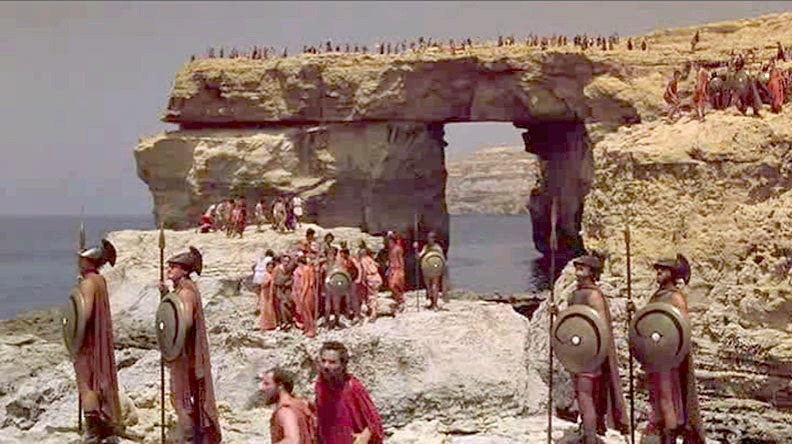 Gozo, the northern island is thought by many to be the mythical island of Ogygia, home of the nymph Calypso in the Homer’s Odyssey that sits above the red sand of the Ramla Beach. These days Gozo is most famous for the 20’ tall, 6,000 year old megalithic temples of Ggantija (thought to be built by Giants) and the Azure Window, a limestone sea arch created thousands of years ago when a sea cave collapsed. It’s been in movies ranging from the 1981 Clash of the Titans, 2002 Count of Monte Cristo and more recently the Game of Thrones. Stones continually fall from the inside of the arch and although there are many warning against walking over the top of the arch, people just don’t seem to care. It won’t be there much longer. The photo from the clash of titans was taken 33 years ago.
Gozo, the northern island is thought by many to be the mythical island of Ogygia, home of the nymph Calypso in the Homer’s Odyssey that sits above the red sand of the Ramla Beach. These days Gozo is most famous for the 20’ tall, 6,000 year old megalithic temples of Ggantija (thought to be built by Giants) and the Azure Window, a limestone sea arch created thousands of years ago when a sea cave collapsed. It’s been in movies ranging from the 1981 Clash of the Titans, 2002 Count of Monte Cristo and more recently the Game of Thrones. Stones continually fall from the inside of the arch and although there are many warning against walking over the top of the arch, people just don’t seem to care. It won’t be there much longer. The photo from the clash of titans was taken 33 years ago.
In the 18th century, Gozo was most famous for the Fungus Rock (Il-Gebla tal-General or the General’s Rock), the large 200’ high rock formation at the entrance to Dwerja Bay. The fungus is a tuber with a really nasty odor. The Knights used it as a cure for dysentery. They were so proud of the medicinal tuber they gave to as gifts to visiting dignitaries. The rock was so protected that anyone coming near it was sentenced to three years in the Galleys. Grand Master Manuel Pinto da Fonseca even built a cable car basket to haul the precious plant 50 yards to the mainland. Eventually it was discovered the seaweed had no medicinal properties. It’s just a foul smelling fungus.
We’re staying in the area known as San Julian (San Giljan), once an 18th century fishing village and now rebuilt with large hotels, disco clubs, a casino and lots of trendy shopping. I know it doesn’t sound like the kind of place we’d usually go for but we got a great package deal at the Weston Dragonara with a terrace overlooking the Mediterranean Sea. The terrace alone was the size of many hotel rooms we’ve rented in the past. We were very comfortable.
We’re a 20 minute bus ride to Valetta. The bus in Malta is the best deal going. For 2 euros 15 cents you get a ticket that is good for the entire day, anywhere on the island, no limits on how many times you use it. Did I mention you can use the ticket all day? I’d like to see some other municipal transportation systems use this business model.
We started out tour of Valetta with a local tour guide Nick Ripard, a great resource of all that is Malta, told in a very tongue and cheek delivery. Nick gives a one hour overview of the history of Valetta and Malta. It’s more than enough to get started. You can email him at nick@foundinmalta.com
A walk through Valetta
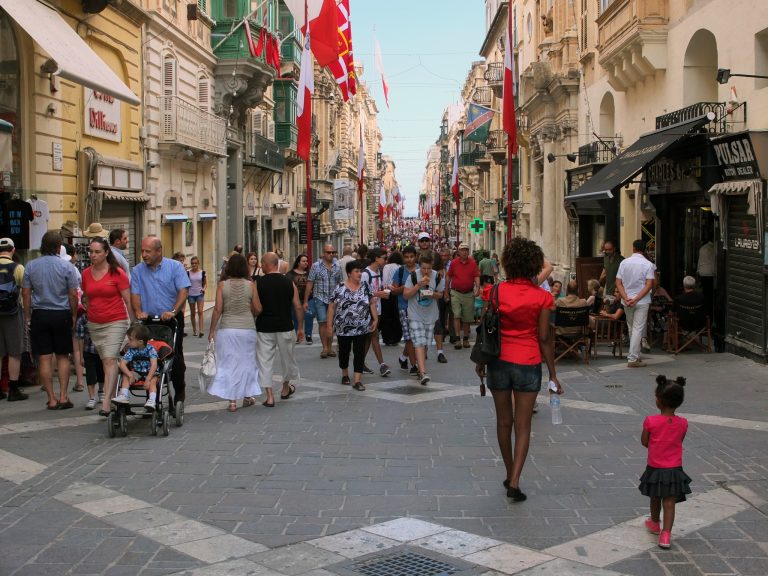 After the Great siege of 1565, Grand Master Jean Parisot de la Valette laid out the plans to build a new city near Fort St. Elmo out of the limestone rock known as Mount Sceberras.
After the Great siege of 1565, Grand Master Jean Parisot de la Valette laid out the plans to build a new city near Fort St. Elmo out of the limestone rock known as Mount Sceberras.
The city had a fortified wall and a fortress gate with a bridge over an incredibly deep moat, known as “The Ditch”. It was well protected.
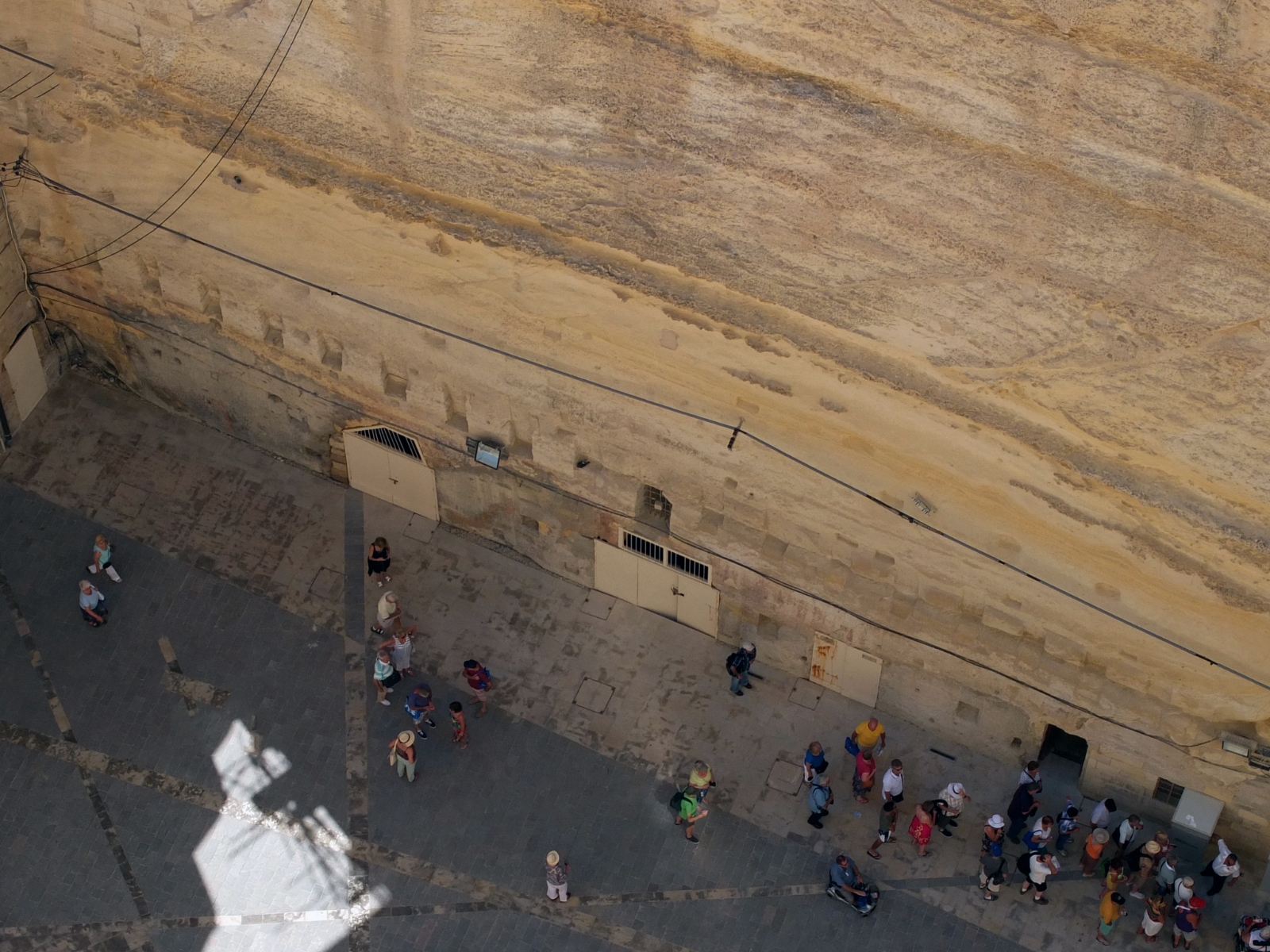
Nick told us that the Ditch actually provided a cross breeze over Valetta and during the summer months when the temperatures can soar in the high 30° Celsius (over 100° Fahrenheit) the Ditch provides a nice cool breeze across Valetta.
In thanks for defeating the Turks, Pope Pius V sent the 44yr old Francesco Laparelli to Malta to build the new city. Laparelli , a student of Michelangelo and somewhat of an expert in military engineering, designed the fortifications and the grid street plan, but most of this Limestone Baroque city was built later on under the direction Laparelli’s assistant, Gerolamo Cassar. As the city grew larger and the Knights grew wealthier new civic building and palaces were added.
Nick Ripard (our Valetta guide) pointed out that the Auberge (palaces) of Knight’s were built with a very large floor at the top and two small floors at the bottom. Which floor you lived on depended on your status. There was an Auberge for each Langue (the language or country of origin of the Knights). Language was a problem. The only common language they had was Latin, which hadn’t been used as a military tongue since 4th century.
Around 1572, the Pope Gregory XIII (the same man who brought you the Gregorian Calendar) brought in the Inquisition just to keep order to the Knights of the Order and scare the hell out of the local residents. The Knights got rich, spending their money on palaces, forts and entertainment. The Grand Inquisitor was a constant reminder for the Knights to heed their vows. The guilty were thrown into the dreaded 13’ deep “oubliette”. Knights and sinners were lowered down here for long periods of time. Those who didn’t die in the pit, faced death from strangulation, tied up in sacks and thrown into the harbor or left in the gutter to being pulled out and left in the gutters to be eaten by wild starving dogs. Many of the guests of the deep pit remarked that no matter how cruel the death, it was a merciful release from the living hell of the Oubliette. The “Oubliette” is still visible in the Fort St Angelo at the point of Vittoriosa, the original fortress city of Birgu. It was rediscovered in 1906. The Fort is currently closed, going through an $18 million restoration.
The Maltese call Valetta “Il Belt” (the city). For most people it’s a place to go to work and then get out. The main street is Republic Street and it is chock full of shops and banners and beautiful limestone baroque buildings. The other two main streets, Bakery Street and Merchant Street are a little quieter and more residential.
As you get further into the town, towards the Fort St Elmo everything is more relaxed. It seems like the gentrification hasn’t hit this part of Valetta yet but I’m sure it’s coming soon. In 2018, Malta will the European Capital of Culture and the Ministry of Culture has enlisted the services of architect Renzo Piano to bring Valetta into the 21st century. His new design for the main gate is very controversial to the locals. These are very traditional people and the 2 big limestone wedges that now stand where the main gate used to be is possibly too weird for them. The new Parliament building (also Renzo Piano) is a beautiful design but totally different from the 16th and 17th buildings dwarfed by it.
 The final piece of Renzo Piano’s plan is just as controversial. The Malta Opera House was built in 1866, designed by Edward Middleton Barry, who also designed the Palace of Westminster (Houses of Parliament) and the Royal Opera House in Covent Garden. The Valetta Opera was destroyed by German bombs on January 12, 1942 and never rebuilt. At one point after the War, the Germans offered to rebuild it but the Maltese refused. After that the lack of Government support and agreement on design has kept it as a bombed out shell for the past 71 years. Enter Renzo Piano.
The final piece of Renzo Piano’s plan is just as controversial. The Malta Opera House was built in 1866, designed by Edward Middleton Barry, who also designed the Palace of Westminster (Houses of Parliament) and the Royal Opera House in Covent Garden. The Valetta Opera was destroyed by German bombs on January 12, 1942 and never rebuilt. At one point after the War, the Germans offered to rebuild it but the Maltese refused. After that the lack of Government support and agreement on design has kept it as a bombed out shell for the past 71 years. Enter Renzo Piano.
The new design is an open air theatre with some of the remains of the 1866 theatre surrounding a very modern outdoor interior. Understandably, the concerts would only be held during good weather.
These are big changes for the traditionalists of Malta but they’ll eventually get used to it. It happens like this in every city.
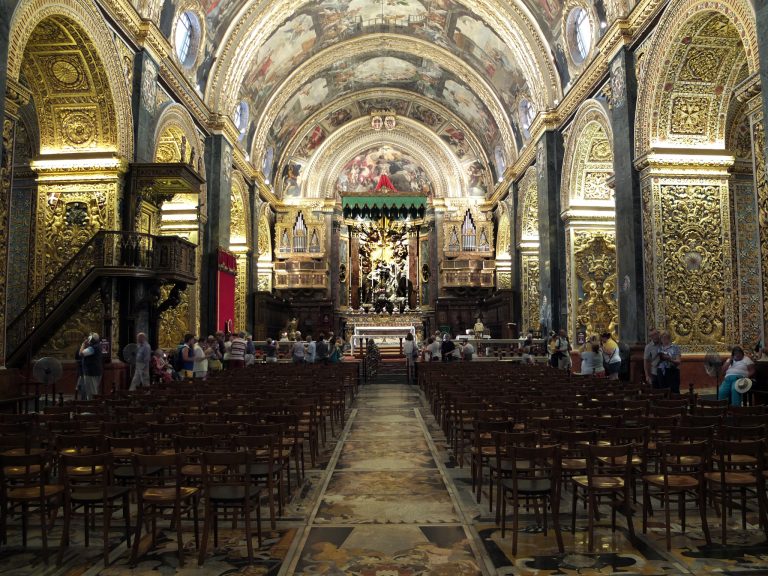 Aside from the strolling (and shopping) along Republic street, people swarm to the St. John’s Co-Cathedral, the main church. The Co-Cathedral status is shared with the Archbishop’s Cathedral in Mdina (Im-Deena) the ancient Fortress city.
Aside from the strolling (and shopping) along Republic street, people swarm to the St. John’s Co-Cathedral, the main church. The Co-Cathedral status is shared with the Archbishop’s Cathedral in Mdina (Im-Deena) the ancient Fortress city.
Building of St John’s started in 1571. The church was consecrated in 1578.
By law, every Knight had to provide a gift to the church on every election or promotion. As the Knights grew wealthier, the gifts became a competition in one-upmanship. Even after Napoleon looted the church in 1798, it is still magnificent.
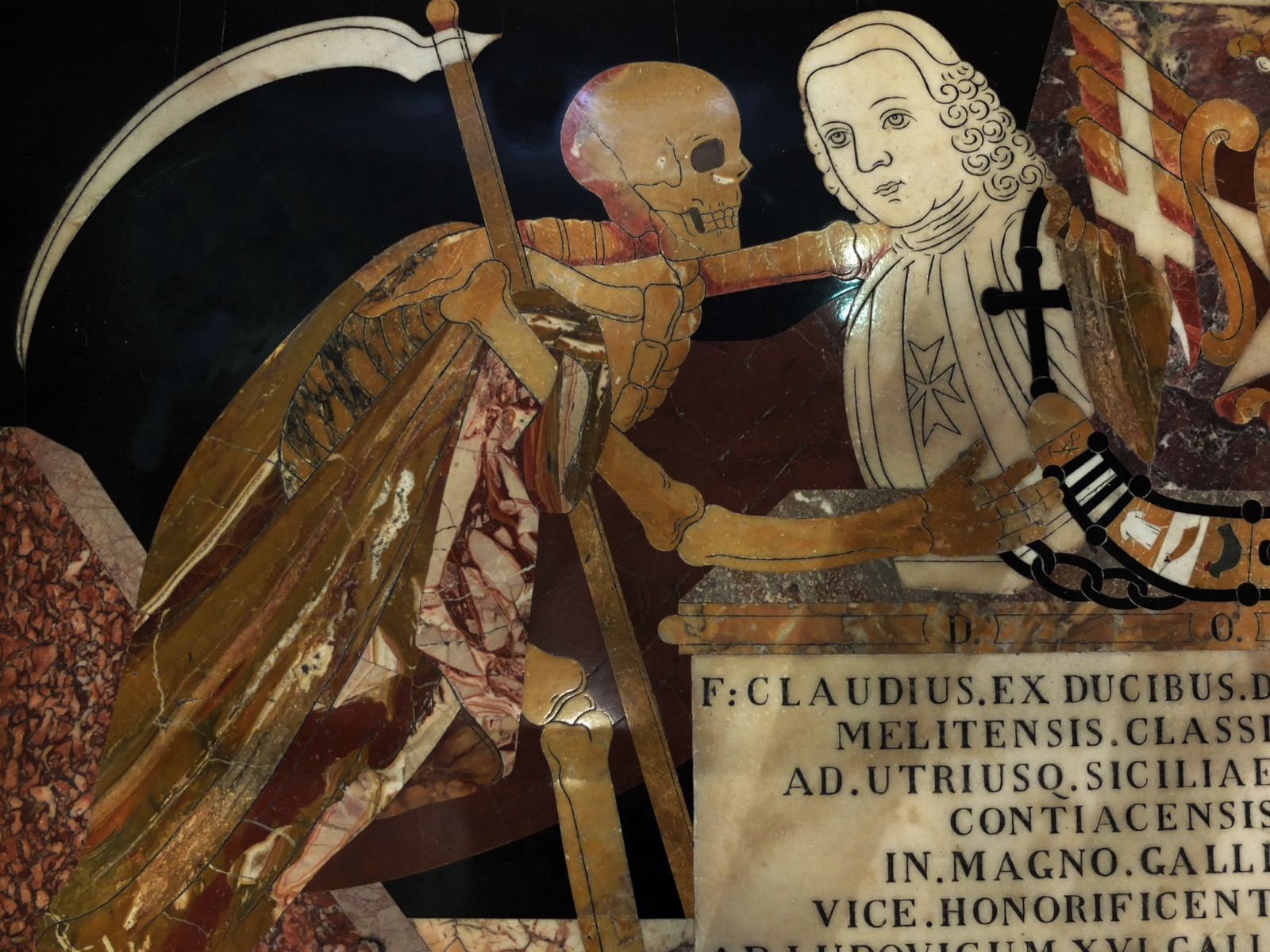 The entire nave is paved with 364 very decorated marble tombs of Knights.
The entire nave is paved with 364 very decorated marble tombs of Knights.
The vault depicts the life of St John the Baptist. It looks like fresco but it’s not. The artist (and Knight of the Order) Mattia Preti painted the oils directly onto the porous stone. Either he didn’t want to spend the laborious time doing a traditional fresco or maybe he just didn’t know how to do it. Still, the artwork is beautiful and it has lasted very well.
In St John’s oratory is Caravaggio’s painting of St Jerome (now under glass). It was stolen from the church on New Year’s Eve 1984. After the robbery, Father Marius Zerafa, a Maltese Dominican friar and Museum director was approached by a man who gave him a tape and a polaroid photo of the painting. They wanted 500,000 lire for the return of the painting. It took Father Marius three years but he was finally able to plan a sting operation and the art theft gang was apprehended and the painting was recovered. By the way, the gang was never prosecuted because of illegal wiretapping by the police. In fact, the two thieves started a civil case against the police in hopes of getting something from the theft but the “speed of justice” won out. One of the thieves died of a drug overdose and the other died of unknown cause as the case dragged on for years.
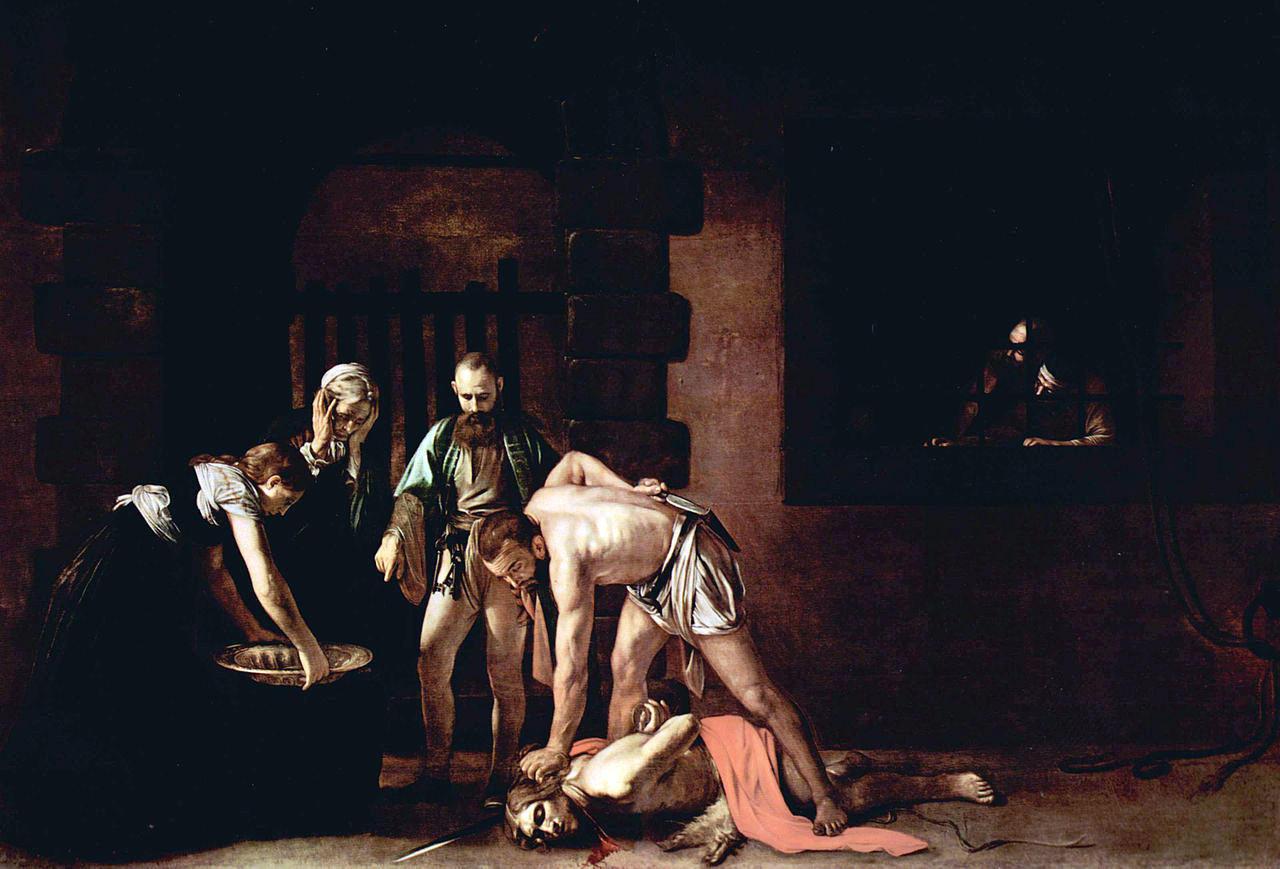 On the opposite wall of the Oratory is Caravaggio’s masterpiece, the “Beheading of St John”. In 1989, thieves attempted to steal silver from the nearby icon of the Madonna of Caraffa. After the 1984 theft, Father Marius had installed an alarm system and when the alarm went off, the thieves ran. Unfortunately, as they fled, one of their knives slashed the painting. It was restored in Florence and returned. It’s beautiful.
On the opposite wall of the Oratory is Caravaggio’s masterpiece, the “Beheading of St John”. In 1989, thieves attempted to steal silver from the nearby icon of the Madonna of Caraffa. After the 1984 theft, Father Marius had installed an alarm system and when the alarm went off, the thieves ran. Unfortunately, as they fled, one of their knives slashed the painting. It was restored in Florence and returned. It’s beautiful.
Caravaggio fled Rome in 1606 after he killed a man in a fight. He originally went to Naples but then received an invitation to come to Malta from Grand Master Alof de Wignacourt, who was looking for a court painter. From 1607 till 1608, Caravaggio split his time painting the canvas and training as a novice in the Order of Knights. In 1608, he was made a Knight of the Order with a rank of Knight of Grace. With his promotion he received a gift of gold and a few slaves. However, in true Caravaggio style, in 1608 he got into a fight with another Knight and was imprisoned in the dungeons of the Fortress St Angelo. Also in true Caravaggio style, he somehow managed to escape and fled to Sicily. He was tried in absentia and expelled from the order on Dec 1, 1608. He didn’t even make 5 months as a Knight.
There are a lot of great old Auberge palaces along the Republic, Bakery and Merchant Streets. Many of them have been turned into Municipal Buildings or Museums. The Archeology Museum is in one the French Auberge Palaces. It’s a great museum about the Neolithic/Megalithic history of Malta. This island has some of the oldest historic remains of any society in history, over 7,000 years old. We highly recommend at least one day for a visit the Megalithic temples. They are as close as a 20 minute bus ride from Valetta to a day trip to Gozo. We also recommend to visit the Archeology museum before venturing out to the ancient sites.
 First of all, the museum is laid out in a very rational format based on ages of development of mankind; Ghar Dalam – 5200-4500BC, Skorba – 4500 – 4100 BC, Zebbug – 4100-3800 BC, Ggantija – 3600-3000 BC to the Bronze age that began around 2500 BC and so on till the Phoenicians came in around 1400 BC.
First of all, the museum is laid out in a very rational format based on ages of development of mankind; Ghar Dalam – 5200-4500BC, Skorba – 4500 – 4100 BC, Zebbug – 4100-3800 BC, Ggantija – 3600-3000 BC to the Bronze age that began around 2500 BC and so on till the Phoenicians came in around 1400 BC.
The museum has many of the treasures taken from the ancient temples.
The ‘Sleeping Woman’ was discovered in the Hal Saflieni Hypogeum.
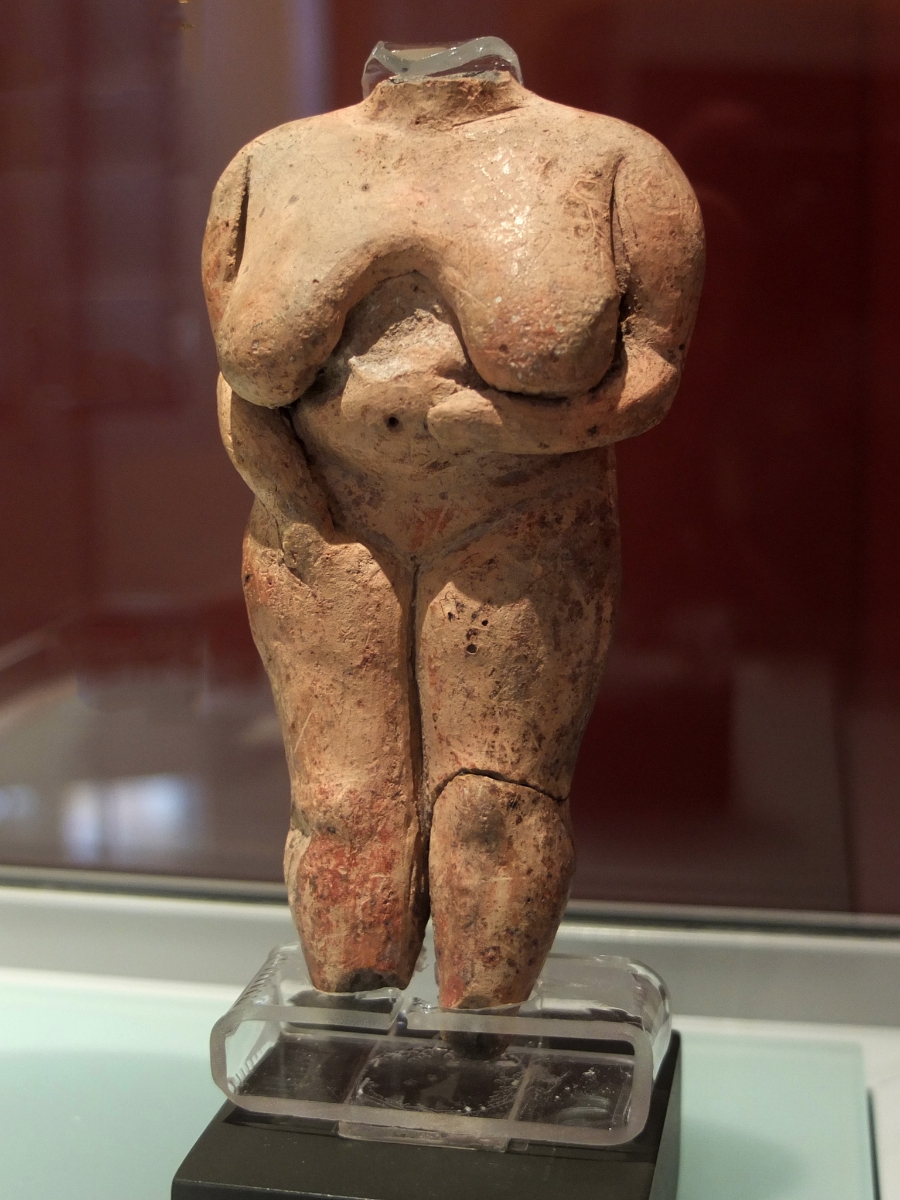
The ‘Venus of Malta’ from the Hagar Qim Temples and the ‘Goats, Rams and Pig’ carving from the Tarxien Temples.
Quite a few of the buildings of Valetta have a pretty interesting history. The 650 seat Manoel Theatre, built in 1720 is listed as the 3rd oldest working theater in Europe, although this is a questionable honor considering Palladio’s 1585 Teatro Olimpico in Vicenza, the 1588 Teatro all’Antica in Sabbioneta (Lombardy) and the 1618 Teatro Farnese in Parma, Italy are all still functioning.
The Grand Master’s Palace now serves as the Malta House of Representatives but when the new Renzo Piano parliament is finished this great Palace will turn into a really nice museum. It currently holds the Palace Armory where you can see the full 110 pound suit of armor made for Grand Master Alof de Wignacourt. He wore this armor for a portrait of him painted by Caravaggio that now hangs in the Louvre. It was probably stolen by Napoleon in 1798.
The Palazzo Parisio (now the Ministry of Foreign Affaires) is where Napoleon stayed for 5 days in 1798 when he looted the treasure of Malta.
Napoleon just wanted to stop at Malta and get some fresh water for his ships on their way to Egypt. When he was denied access and water he just took the island. The siege and surrender took about three minutes and two shots. Actually, the water story might be a bit off the mark. Napoleon was really pissed when he learned about the alliance made between Russian Tsar Paul I and Malta’s Grand Master, Ferdinand Von Hompesch. If you remember your history, Napoleon had a thing about conquering Russia.
Grand Master Von Hompesch fled and took refuge in Russia. The rest of the Knights were run off the island and disbanded. Napoleon liberated some 2,000 Muslim slaves and abolished slavery. He kicked out the Inquisitor and abolished the Inquisition still in progress in 1798. That was the good part.
He then went on to confiscate 1,000 canons, 35,000 muskets and over 1 million francs of jewels, 3 million of gold francs and millions more in silver, including 3500 pounds of silver plates from the Sacra Infermeria on Birgu used to serve food to the infirmed.
The final insult was in taking the ceremonial sword of Grand Master de La Valette (now on display at the Louvre). Napoleon arrived on June 11th and stayed for 5 days. He left with at least 268 years of accumulated treasure, most of melted down into coins to pay his armies on the way to battle the English in Egypt.
Less than 2 months later, on August 2nd, 1798, his flagship, the 5,100 ton, 118 gun ship known as the Orient went down in Abou Kir Bay, east of Alexandria. Lord Admiral Nelson’s warships fired on the Orient and ignited the ship’s powder magazine. The explosion was so powerful, the 15 ton rudder of the ship was blown 300 meters away.
When Nelson’s body was returned from the Battle of Trafalgar in 1805 (his final battle), he was buried in a coffin made from the mast of the Orient.
I know I’m getting a little off the subject but I just have to add this final note. On June 27, 1999, Louise Napoleon Bonaparte-Wyse (age 63), a descendant of the Emperor’s brother went to the site of the Battle of the Nile and met with Anna Tribe (the great-great-great grand-daughter of Admiral Nelson and Lady Hamilton). Bonaparte-Wyse commented that the meeting was “very friendly”. Anna Tribe said it was a fitting commemoration for Nelson who loved pomp and ceremony. All is well (and forgiven) in international historical diplomacy.
In our guided tour of Valetta, our guide Nick pointed out one smaller house that once belonged to the English Knight, Oliver Starkey who fought in the Great Siege of 1565. He has the honor of being the only Knight to be buried in the crypt of St John’s Cathedral along with the Grand Masters. However, he is more famous for being the ancestor of Richard Starkey (Ringo Starr).
At the end of Valetta is the Fort St. Elmo.
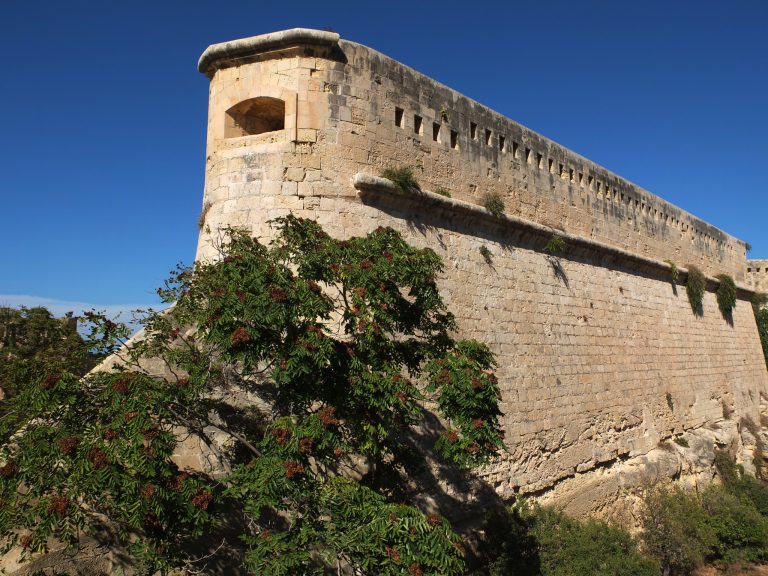 The Turks thought the capture of Fort St Elmo would take just a few days. They were wrong. The fort held for 31 days, falling (ironically) on June 23rd on the Feast of St John the Baptist, the patron saint of the Knights. The fighting got barbaric. Turks beheaded knights and nailed the bodies to crosses and used them as rafts to sail across the harbor. Knights beheaded Turks and used the heads as cannon balls firing them into the Turkish fleet.
The Turks thought the capture of Fort St Elmo would take just a few days. They were wrong. The fort held for 31 days, falling (ironically) on June 23rd on the Feast of St John the Baptist, the patron saint of the Knights. The fighting got barbaric. Turks beheaded knights and nailed the bodies to crosses and used them as rafts to sail across the harbor. Knights beheaded Turks and used the heads as cannon balls firing them into the Turkish fleet.
It was a pyrrhic victory for the Ottoman Turks, losing over 8,000 soldiers in the taking. None of the defending Knights of Malta survived.
The outcome of the Great Siege signaled the end of the Maritime power of the Ottoman empire. Suleiman died a year later in 1566 while watching an Ottoman victory at the Battle of Szigetvar on the Hungarian Croatian border. Six years after Malta, the Ottoman navy was routed again in the Battle of Lepanto off the coast of Greece, losing over 200 ships. They never recovered.
Fort St. Elmo is currently going through a restoration, hopefully to be ready for the 2018 celebration as the Cultural City of Europe. It served as the Valetta Police HQ for years.
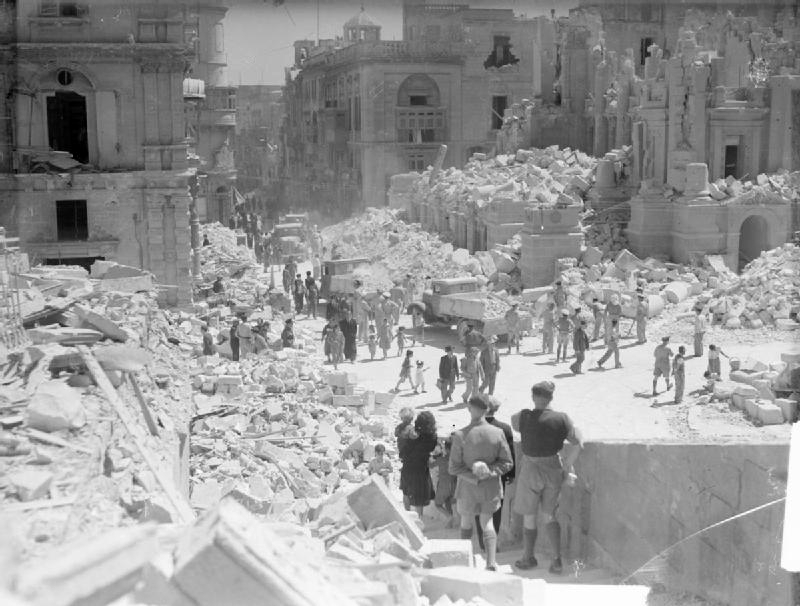 In the lower level of the Fort is The National War Museum, opened in 1975.
In the lower level of the Fort is The National War Museum, opened in 1975.
Malta was a strategic location during this war as well. It was also bombed pretty badly. There is a pretty interesting exhibit that finishes up Eisenhower’s jeep from the Operation Husky invasion of Sicily in 1943.
Fort St. Elmo was used as the jail in the film “Midnight Express”, the escape from the famous Turkish prison in Istanbul, now the Four Season’s hotel.
Malta is a favorite location for films, although not as Malta. It’s served as the background for Game of Thrones, Game of Thrones, world War Z, Cutthroat Island, Da Vinci Code, Gladiator, Munich, Troy and many more. In 1980, Robert Altman created the town of “Sweethaven” in Malta for his not so successful film “Popeye”, The movie set, now known as Popeye’s Village” is now a family amusement park on the western side of the island. From what I hear, it’s about as successful as the movie was.
Valetta is a good 1.5-2 day visit.
On our third day, we took the bus out to Mdina (Im-Deena) and Rabat, a 35 minute ride.
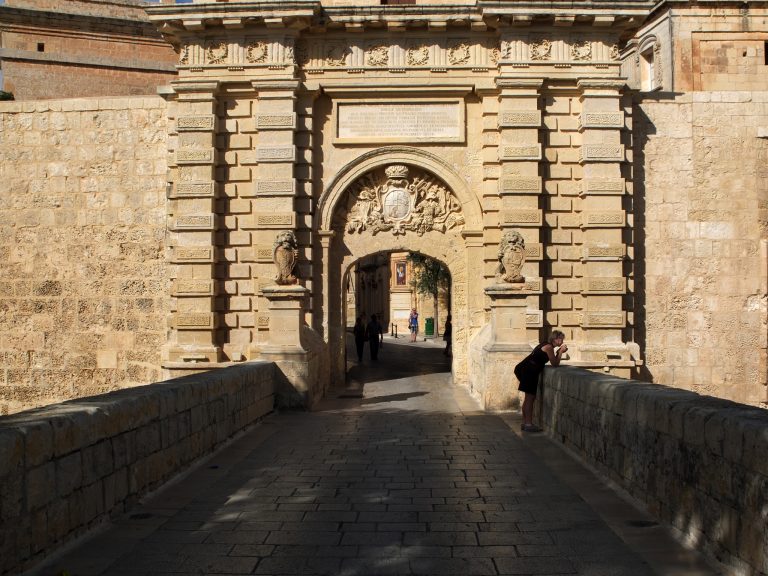 Mdina is the ancient walled city built during the Arab occupation between the 9th and 11th centuries. It’s been home to Normans, Swabians, Angevins, Argonese and Castilians before it was given over to the Knights of St John. Mdina was Castle/Fortress and Birgu (now Vittoriosa) was the Fortified harbor. When Valetta was built in 1570, Mdina became the old city and pretty much left alone.
Mdina is the ancient walled city built during the Arab occupation between the 9th and 11th centuries. It’s been home to Normans, Swabians, Angevins, Argonese and Castilians before it was given over to the Knights of St John. Mdina was Castle/Fortress and Birgu (now Vittoriosa) was the Fortified harbor. When Valetta was built in 1570, Mdina became the old city and pretty much left alone.
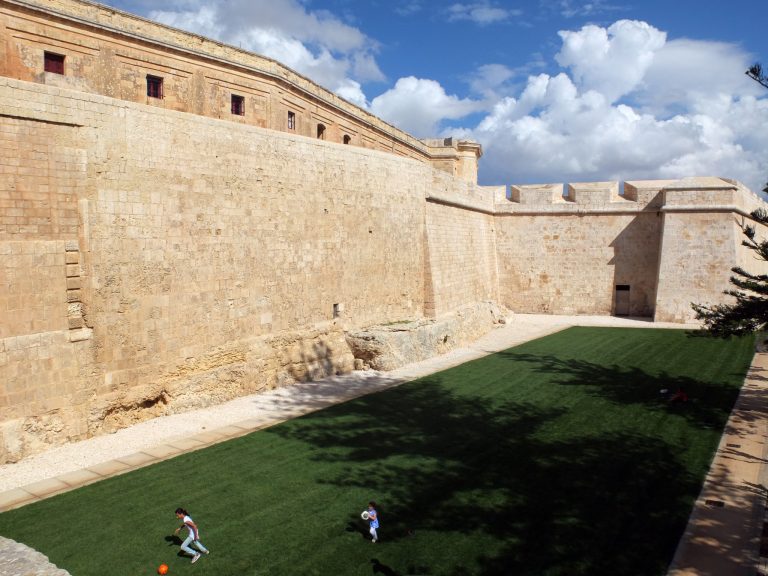 It’s still in almost perfect 16th century condition. The population of the old city is around 500 people with very few cars. It’s one of the most preserved cities we’ve seen, from the fortress walls, to the moat (now a grand lawn) to the entrance gate, the Grand Master’s Palazzo Vilhena and The Xara Palace is the 5star deluxe boutique Relais and Chateaux hotel.
It’s still in almost perfect 16th century condition. The population of the old city is around 500 people with very few cars. It’s one of the most preserved cities we’ve seen, from the fortress walls, to the moat (now a grand lawn) to the entrance gate, the Grand Master’s Palazzo Vilhena and The Xara Palace is the 5star deluxe boutique Relais and Chateaux hotel.
The town was totally empty when we were there in late September. The tourists were mostly gone. The Horse and Buggy drivers were almost pleading with the few remaining visitors to take a ride with them through the town.
No one was visiting the Mdina Dungeons with it’s waxwork torture chamber. No one was visiting the Museum of Natural History with the chip of the moon given to them by US President Richard Nixon. About a dozen people made it over to the Baroque St Paul’s Cathedral. The silver Cross carried to the first crusade in 1099 is somewhere inside but we never found it.
In 60 AD, St Paul was shipwrecked in Malta while on his way to Rome. He was arrested in Jerusalem but because he was a Roman citizen at the time, he was granted the right to be tried by the Emperor Nero in Rome (possibly not a wise decision). Anyway, he didn’t get to Rome. The ship was wrecked in a storm. Paul (Saul of Tarses) spent three months in Malta where legend states that he converted the entire population of the island, including the Roman Governor Publius. Of course, no biblical story is without controversy and these days Biblical scholars are questioning if the “Melita” mentioned in the bible as the location of Paul’s shipwreck was really Malta, even though the ‘Canis Melitaeus’ has been confirmed as the Maltese dog.
The little toy dog known as the Maltese did (apparently) come from Malta, although, since the island is a barren mass of limestone with no rivers, its hard to believe anything originated from here besides limestone. However, the ‘Canis Melitaeus’ was once a favorite of the ladies of ancient Rome. Records of the dog go back to the ancient Greeks. In our 5 days here, we saw one of them, but then in our many visits to the Dalmatian Coast of Croatia we’ve only seen one Dalmatian. So it goes.
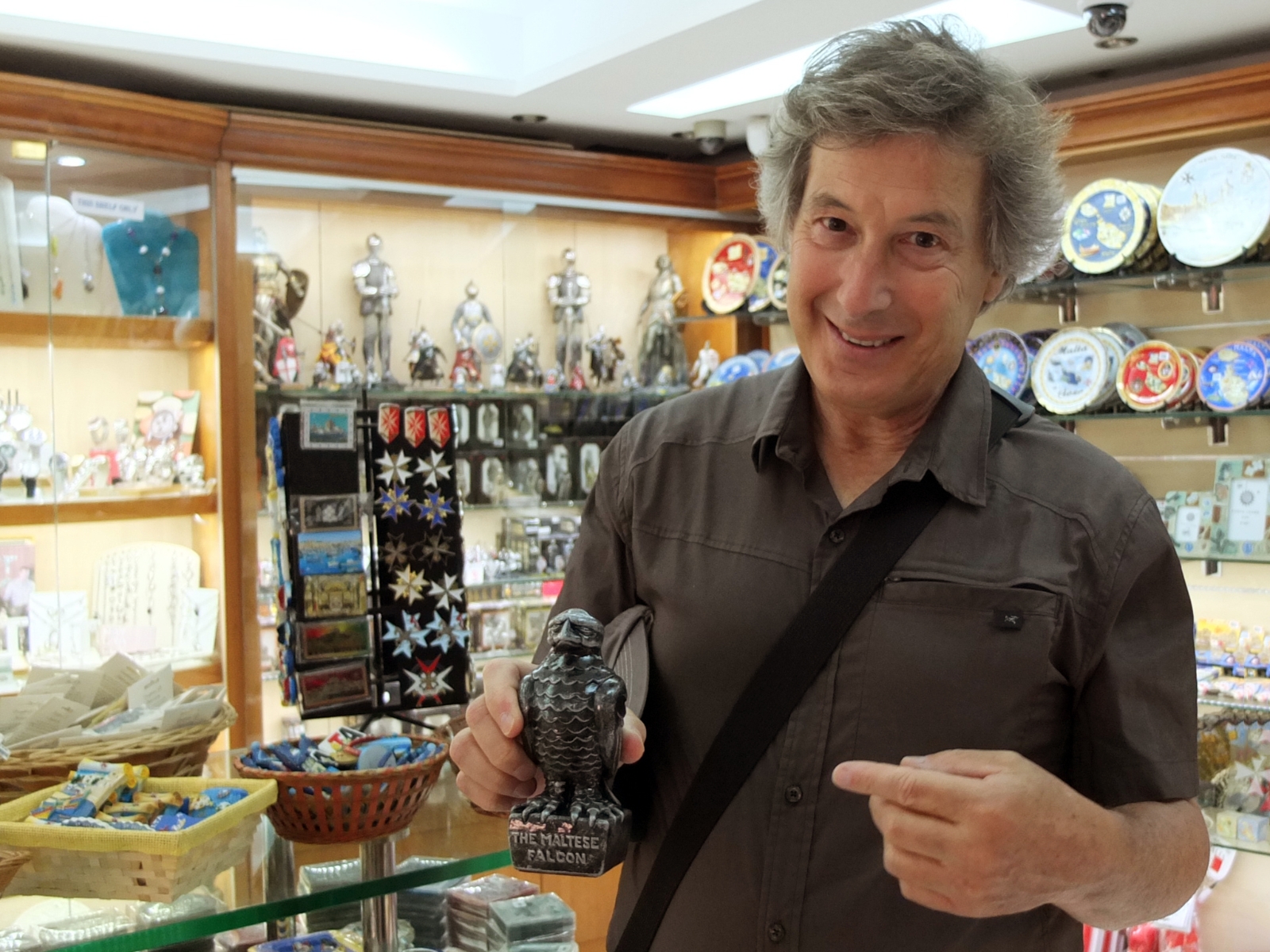 While in Mdina, I finally found a replica of the Maltese Falcon. It was the souvenir shop called “The Maltese Falcon, of course.
While in Mdina, I finally found a replica of the Maltese Falcon. It was the souvenir shop called “The Maltese Falcon, of course.
Prior to our visit here, the only things I knew about the island where the Knights of Malta, the Maltese dog and the Maltese Falcon. We looked through dozens of souvenir shops in Valetta for one but no Black Bird. I guess the Maltese don’t really care much about a 1941 American Film.
In the film “The Maltese Falcon”, this was Caspar Gutman’s explanation of the story told to detective Sam Spade:
“In 1539 the Knights of Rhodes persuaded the Emperor Charles V to give them the Island of Malta. He made one condition. They were to pay him, each year, the tribute of one falcon in acknowledgement that Malta was still under Spain.
The Knights were profoundly grateful to emperor Charles for his generosity towards them. They hit on the happy thought of sending him for the first year’s tribute, not an insignificant live bird but a glorious golden falcon encrusted from head to feet with the finest jewels of the coffers. They sent this foot-high jeweled bird to Charles, who was in Spain. They sent it in a galley commanded by a member of the Order.
It never reached Spain. A famous admiral of buccaneers took the Knight’s galley and the bird.
In 1713 it turned up in Sicily. In 1840 it appeared in Paris. It had, by that time, acquired a coat of black enamel so that it looked like nothing more than a fairly interesting black statuette. In disguise, Sir, it was, you might say, kicked around Paris for more than three score years by private owners too stupid to see what it was under the skin…”
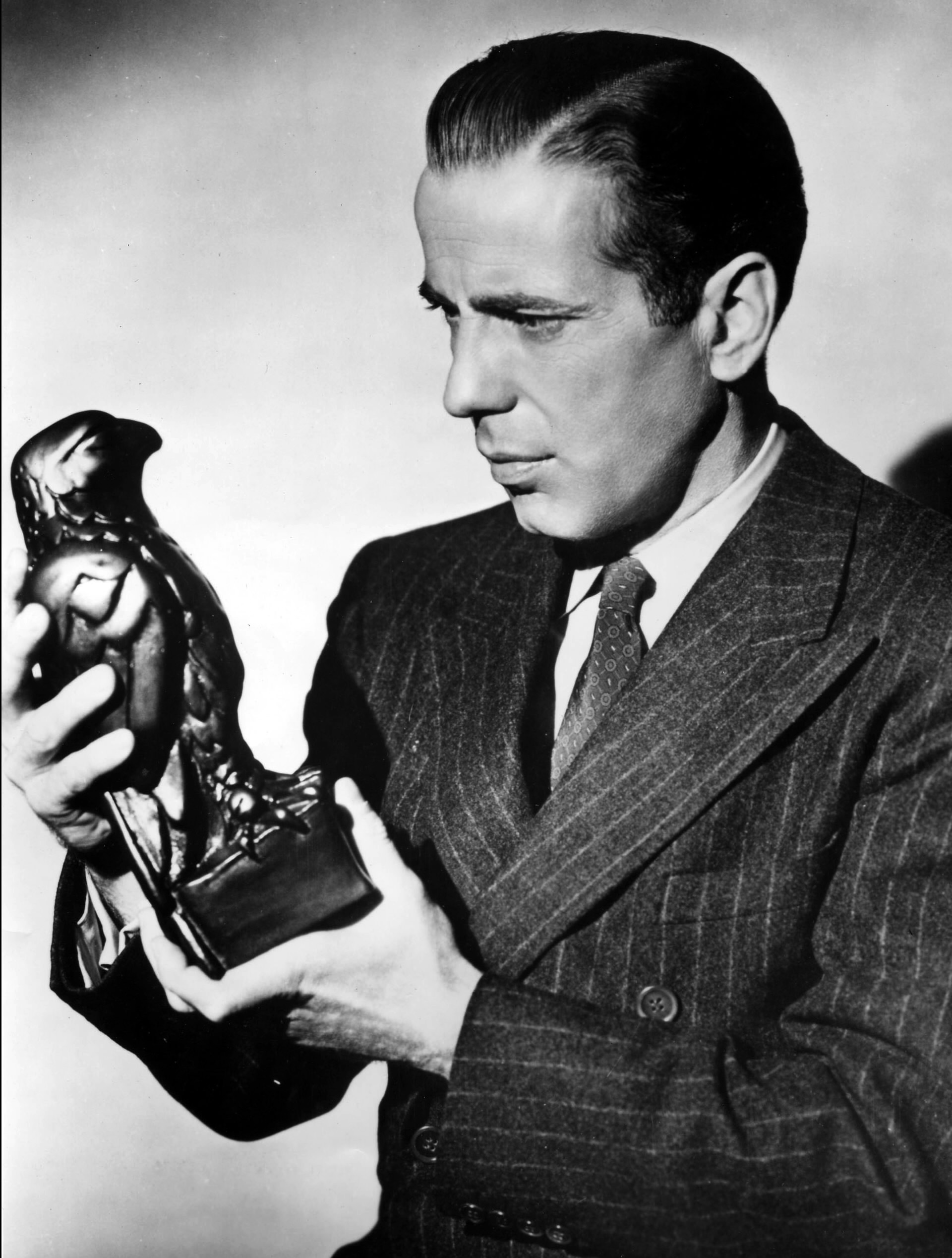
In reality, Gutman’s story wasn’t that far from the historical truth, at least the truth about the tribute of a live falcon. The Maltese Falcon is actually the Mediterranean Peregrine Falcon, prized for its diving speed of 200 mph. It was made a protected species on the islands in 1980. In payment for the islands of Malta, Gozo and Comino, the Knights of St John had to give the Holy Roman Emperor Charles V and his mother, Queen Joanna of Castile (Joanna the Mad) one Peregrine Falcon every year on All Saints Day. The ceremonial tribute was dutifully paid every year until the order was thrown out of Malta in 1798.
For John Huston’s 1941 film, a few Black Bird statues were made of the famous Falcon, two lead ones and few plaster ones. Humphrey Bogart’s arms got too tired from holding up the lead bird for long periods of time during the shoot. In 1994 one of the lead Birds was auctioned off for $400,000. I recently read that the value of the original lead birds are now valued at $2,000,000 each which was, according to Caspar Gutman, the value of the bird in the 1941 film.
Rabat was once the suburb of Mdina. Now it’s a sprawling urban mass.
The Megalithic temples of Malta
These are the oldest free standing structure on Earth. The oldest in Gozo are 7000 years old.
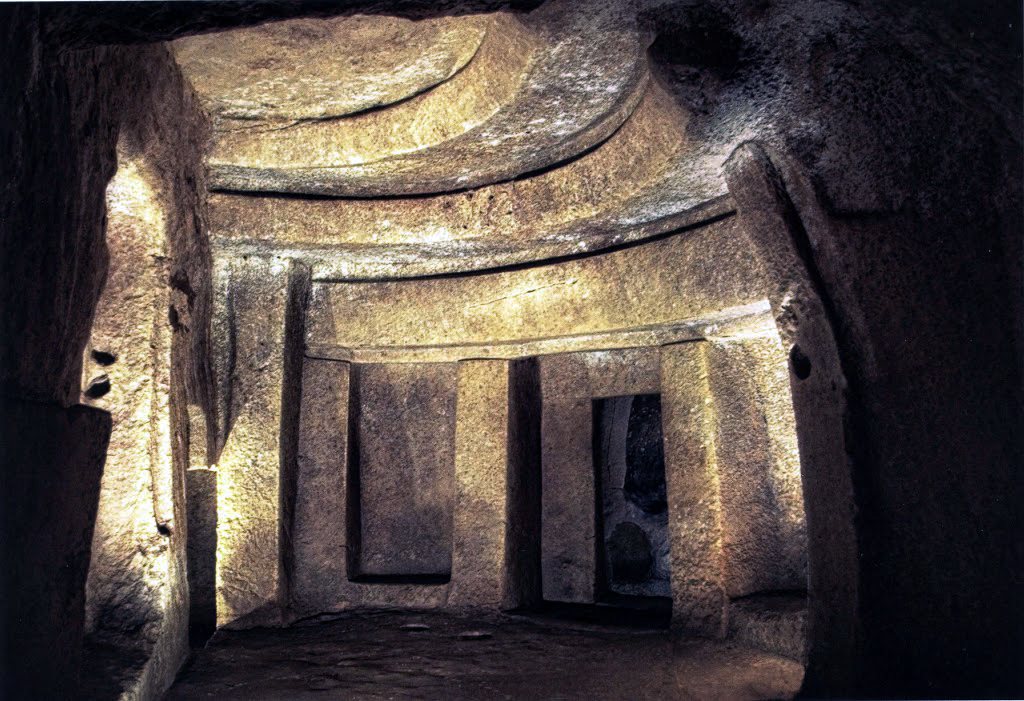 We only had one more day and by sheer luck we got into one of the tours to the Hypogeum at Hal Saflieni in Paolo, about a 30 minute bus ride from Valetta. Only 60 people a day are allowed into the Hypogeum and only 10 at a time under strict supervision. You need to make reservations months ahead of time at their website
We only had one more day and by sheer luck we got into one of the tours to the Hypogeum at Hal Saflieni in Paolo, about a 30 minute bus ride from Valetta. Only 60 people a day are allowed into the Hypogeum and only 10 at a time under strict supervision. You need to make reservations months ahead of time at their website
There are 12 tickets for sale every day at the Museum of Fine Art in Valetta. The museum opens at 9am and we were told that the line to get last minute tickets starts to cue around 7am. We showed up at 3pm in the afternoon and got lucky. The last 2 tickets for the 4pm tour the following day were still available. We grabbed them. That was the good news. If you buy your tickets online they are each. If you buy them last minute at the Museum of Fine Arts they’re each. Still, it proved to be well worth the money.
The Hypogeum is the star attraction of the megalithic archeological discoveries on Malta. It is comprised of three levels of curved, interlinked carved limestone. Like so many of these discoveries this one also happened by accident when a contractor building a new housing development in 1902 crashed through the roof of the upper chamber. Unfortunately, the builder didn’t tell anyone about the find till he finished the development, and unfortunately, in the process of finishing his job, he destroyed some of the site.
In 1905, Themistocles Zammit, first director of Malta’s Museum Department, historian, chemistry professor, medical doctor, and the greatest name for an Archeologist ever, was put in charge of the excavation, digging out thousands of years of mud.
By 1909 they had discovered alongside the pottery shards and personal artifacts, the bones of between 6,000 and 7,000 people and the “Sleeping Woman” fertility goddess now in the Archeology Museum. The Hypogeum was an extensive burial temple.
Aside from the support of the Heritage Malta Foundation and the income from the pretty expensive entry fee, the Hypogeum also received close to $750,000 from Iceland, Norway and Liechtenstein for equipment to stabilize the environment of the caves. It’s actually quite warm down there.
There are three levels of the underground cavern system. The top level, somewhat compromised by the building contractor is the oldest, from around 4000BC. The deeper chambers were built later on, possibly between 3,000 – 2,500 BC. To give you an idea of the age of this monument, the Pyramids were built around 2500 BC, Stonehenge was built around 2000 BC.
The limestone was carved out using tools made of flint, stone and deer horn. When the room known as “Holy of Holies” was discovered, some thought it was a medieval temple because the carving was so precise. It’s beyond amazing how these people were able to cut and polish such perfect lines. Most archeologists believe this indoor domed temple mirrors what the outdoor temples must have looked like. They stacked slabs of limestone on top of each other, gracefully cantilevering each layer from the upright walls towards the center. When the slabs met in the center, they carved out the dome ceiling of the interior. It’s so sophisticated and so perfect and yet they did it 5000 years ago.
Another chamber known as the “Oracle’s Chamber” has circular red ochre decoration painted on the ceiling of the stone, still in very good condition. The room has a magical resonance when activated by a certain timber of a deep male voice. Yes, the room actually vibrates.
We could see down to the third level but our walk was restricted to just the top two levels. In a pit of the third level we were shown the location where they discovered the famous pottery figure of the “Sleeping Woman”. We don’t know if she is in eternal sleep, if she is communicating with the earth or if she is in eternal death. The statue was found in a burial chamber. Nonetheless, she is perfectly formed, really beautiful and really old.
The 7,000 year old inhabitants of the island were part of a fertility cult. We think the fertility was related to food more than progeneration. Fertility goddesses are in all the megalithic sites. At least they are believed to be fertility goddesses.
The Sleeping woman is the only complete form. The others have either a body or a head.
There are lots of unknowns concerning the Hypogeum and the Fertility cult. Sometime before the 1400 BC arrival of the Phoenicians to Malta the Fertility Cult vanished. We do know they were a sea going people and traded with tribes in Sicily. All we can think of is it was too difficult to grow anything on this big limestone rock and they decided to move on. I would have done the same.
We arrived to the Hypogeum about an hour early, which was enough time to visit the Tarxien Temples about a 10 minute walk away in the small town of Tarxien.
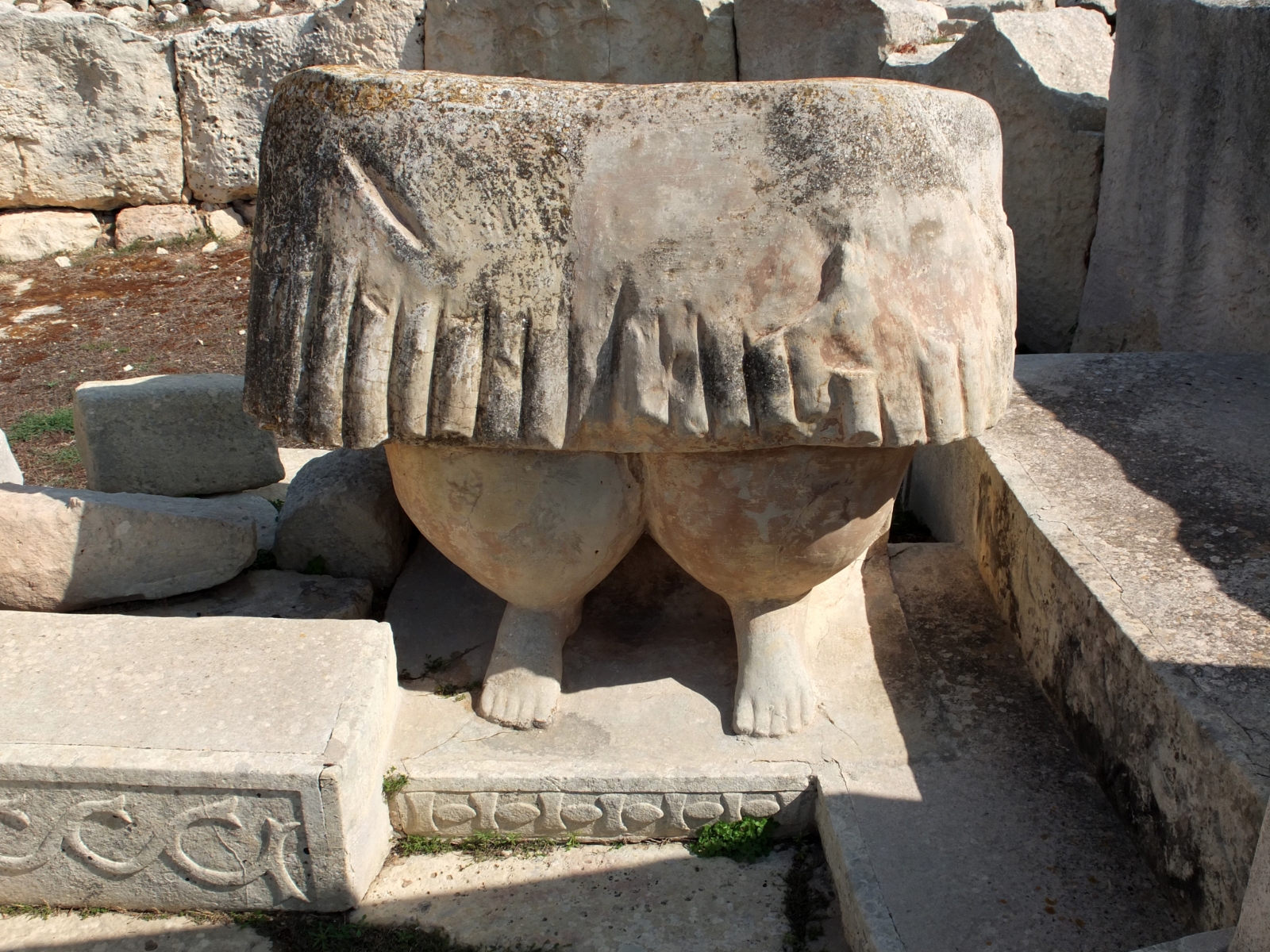 The Tarxien Temples sit in the midst of a 20th century apartment complex. It’s a bit strange but the heritage Foundation did a great job building a monument site here. Your attention is so focused on the ancient community of homes and temples you barely notice the modern buildings.
The Tarxien Temples sit in the midst of a 20th century apartment complex. It’s a bit strange but the heritage Foundation did a great job building a monument site here. Your attention is so focused on the ancient community of homes and temples you barely notice the modern buildings.
The discovery here came in 1914 when a farmer complained that the large rocks were dulling his plow blades and since these large rocks were in the vicinity of the Hypogeum, enter Dr. Themistocles Zammit, the archeologist who dug out the nearby Hal Saflieni Hypogeum. He had an idea the rocks came from the same Megalithic period. He was right.
These temples are over 4500 years old. It’s astounding how these people had the skill and technology to built something like this.
The highlight is the headless fat goddess of fertility wearing a full pleated skirt. At full height she must have been over 8’ tall. Only the lower half remains.
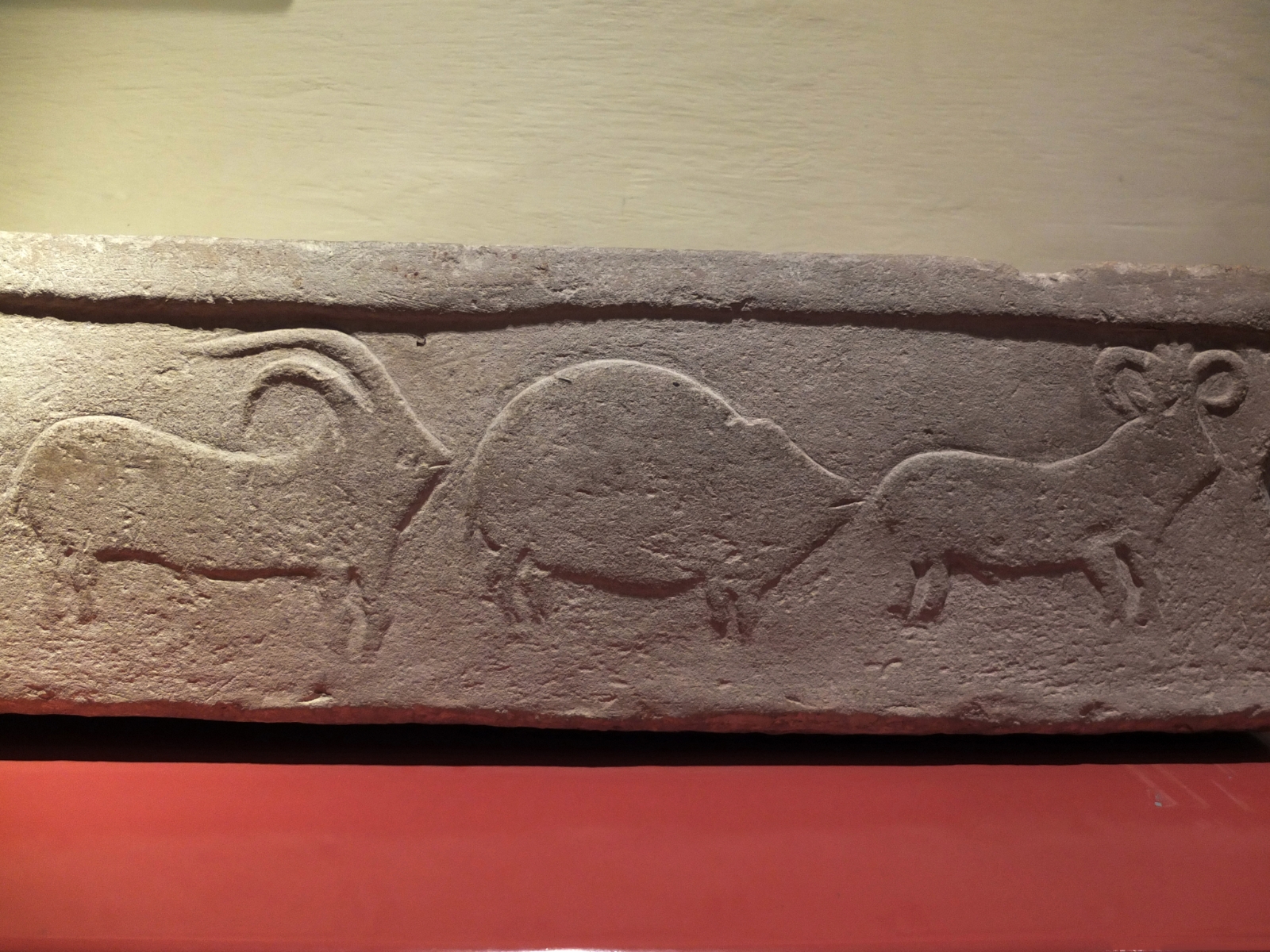 Many of the other discoveries, like the stone relief of goats, rams and a pig are now in the Archeology museum. As I said, the Archeology Museum is a good place to start before you head out to any of the Neolithic/Megalithic sites.
Many of the other discoveries, like the stone relief of goats, rams and a pig are now in the Archeology museum. As I said, the Archeology Museum is a good place to start before you head out to any of the Neolithic/Megalithic sites.
The weren’t many tourist at the Tarxien Temples which made it easy to get a really good view of the upright semicircles of cut stones. We were also entertained by a Nordic “new age” woman with her Celtic harp. Wandering around the site in her bright flowing colors she told us she was “communicating with the stones” with her harp music. We later ran into her at the Hypogeum tour but they didn’t allow her harp to communicate with the cave.
We could have used another 2 days in Malta.
We never got to the Azure Window or the Ggantija temples or the Fungus Rock of Gozo.
We never go to the Blue Lagoon and wild cumin of Comino.
We never made it to Hagar Qim (Sacred Stones) and Mnajdra, both dating back to 3600-2500 BC. We did see the famous “Venus of Malta” of Hagar Qim, but that was in the Archeology Museum.
We never got to the Ghar Dalam (Cave of Darkness) where in 1865, when it was discovered, they found remains of animals from the end of the ice age 180,000 years ago when Malta was connected to Sicily.
We never got to the Dingli cliffs, the highest point on Malta, 850’ over the Mediterranean. This is the area we you can see a lot of the ancient Cart ruts from the megalithic period
We never got to the Vittorioso, the original Fortress in the Harbor. Fort St Angelo of Vittorioso was closed for restoration but the streets and many of the buildings are from the original settlement.
We were told the other two cities on the harbor, Senglea and Cospicua are pretty run down. They were bombed out during World War II and never really recovered. 3,156 tons of bombs fell on the dockyards around these small cities in 1942. Fort St. Michael was destroyed and Fort St. Rinella is currently used by the Mediterranean Film Studios.
We’re thinking this might a great place to return to in 2018 when all the restorations are completed.
Too see more of our 2013 photos from Malta, CLICK HERE
You must be logged in to post a comment.